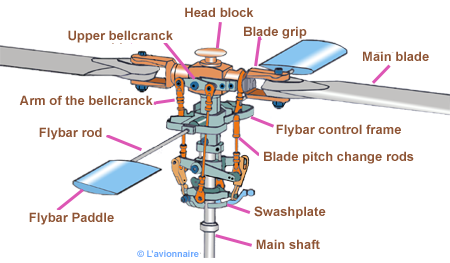
- Sommaire
- Histoire de l'aviation
- Introduction
- Voler le Rêve
- Aérostats 1ère partie
- Aérostats 2ème partie
- Les précurseurs
- Les premiers vols
- Première guerre mondiale
- Aviation maritime 1ère partie
- Entre guerres 1ère partie
- Entre guerres 2ème partie
- Sec. guerre 1ère partie
- Sec. guerre 2éme partie
- Entre 1945 et 1959
- Entre 1960 et 1979
- Entre 1980 et 2015
- Avions expérimentaux
- Les hélicoptères
- La Conquête spatiale
- Pourquoi un avion vole
- Aérodynamique
- Mécanique du vol
- Introduction
- GMP Courbes Wu/Wn
- GMP vol horizontal
- GMP vol en montée
- GMP vol en descente
- GTR Courbes Tu/Tn
- GTR vol horizontal
- GTR vol en montée
- GTR vol en Descente
- GTP Différence
- Domaine de vol
- Vol en haute altitude
- Vol en virage
- Décrochage
- Autorotation - Vrille
- La ressource
- Centre de gravité
- Stabilité d'un aéronef
- Cellule des aéronefs
- Introduction
- Les différentes ailes
- Structure des ailes
- Fuselage 1ère partie
- Fuselage 2ème partie
- Les différents empennages
- Structure des empennages
- Les becs d'attaque
- Les volets hyper.....
- Les gouvernes de vol
- Les compensateurs
- Les Servo-commandes
- Commandes électriques
- Aérofreins et spoilers
- Nacelle et Mât réacteur
- Verrières et hublots
- Portes 1ère partie
- Portes 2ème partie
- Déperditeurs statiques
- Cellule Cessna 172
- Cellule Jodel 112
- Cellule Piper J3
- Cellule des chasseurs
- Concorde la légende
- Pressu/Climatisation
- Hélicoptères
- Autogires
- Les ULM
- Planeurs
- Trains d'atterrissage
- Turbomachines
- Moteurs à pistons
- Hélices
- Instruments de vol
- Introduction
- Circuits anémométriques
- Circuits pneumatiques
- Vitesse un peu de Maths
- Anémomètre
- Machmètre
- Altitude un peu de Maths
- Altimètre
- Variomètre
- Principe du gyroscope
- Horizon artificiel
- Directionnel
- Indicateur de virage
- Horizontal Situation Indicator
- Attitude Director Indicator
- Sonde d'incidence
- Température un peu de Maths
- Sonde de Température
- Air data computeur
- Instruments Navigation
- Instruments Radio-Nav
- Instruments Moteur
- EFIS Cessna 172
- EFIS Fokker 100
- Cockpit Airbus A350
- Navigation aérienne
- Radars/Transpondeurs
- GPWS et EGPWS
- TCAS II
- Enregistreurs de vol
- Radars météo aéronefs
- Ram Air Turbine
- Toilettes avions
- Secours / Protections
- Les aérodromes
- Les héliports
- Météorologie
- Codes météo
- Phénomènes dangereux
- Dégivrage avion
- Normes de certification
- Opérations aériennes
- Aires de protection
- Aérostats
- Spinning / Fan-wing
- Résumé en anglais
- Résumé en allemand
- Résumé en espagnol
- Résumé en italien
- Résumé en portugais
RÉSUMÉ EN ANGLAIS
HELICOPTER
Major sections
The Bell 212 is a twin turbine, two bladed single main rotor, medium lift helicopter designed to carry up to 15 persons, including the pilot(s).

Forces acting on a helicopter
As soon as a helicopter leaves the ground, four main forces act on it: Propulsion, drag, lift and weight. In order to fly, it is important to understand how these forces act and how they can be controlled through propulsion and flight control. .
The propulsive force (movement of the helicopter) is the forward force generated by the engine, propeller or rotor. It counteracts the air resistance caused by flow disturbances of the rotor, fuselage and other protruding objects. The drag counteracts the tractive force and acts parallel to the relative wind in the backward direction.
The combined weight of the helicopter itself, crew, fuel and cargo or baggage. The weight pulls the helicopter downwards due to gravity. It counteracts lift and acts vertically downwards through the centre of gravity of the helicopter. The lift opposes the downward force of the weight. It is generated by the dynamic action of the air on the rotor(s) and acts perpendicular to the flight path.

Two-bladed main rotor
The main rotor assembly is a two bladed, semi-rigid type. The rotor assembly has feathering axis. Design of rotor allows flapping (seesaw) and pitch change of individual blades.

Four-bladed main rotor

Flight controls
The flight control units located in the flight deck of all helicopters are very nearly the same. All helicopters have either one or two of each of the following:
- cyclic pitch control ;
- collective pitch control ;
- throttle rpm ;
- directional control pedals.

Basically, these units do the same things, regardless of the type of helicopter on which they are installed; however, the operation of the control system varies greatly by helicopter model.

